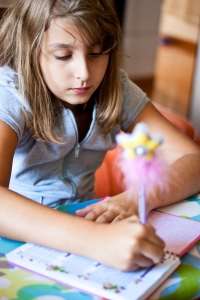By Shoshana Hayman, director of the Life Center/Israel Center for Attachment Parenting, http://lifecenter.org.il
Grandmother Naomi, now well into her 80s, still remembers the excitement she felt the first time she used the newly invented mop that allowed her to wash her floors without bending down on her hands and knees.
Change has come fast in 50 years – from the mop to electrical gadgets, cell phones, ipods, computers, blackberries, and internet. In fact, the upgrade in technology is so fast that new systems are designed before we have even mastered the use of the older versions.
For parents, this is not necessarily good news. “Attachment technology” is very powerful. It was originally designed for use in business, but in recent years has fallen into the hands of the young, and today teenagers and children often know more about cell phones, ipods, sms and icq than their parents. Why is this called “attachment technology,” and why is it cause for concern for parents and teachers?
The greatest need of children is attachment. The more secure the attachment, the more the child can rest in it and be free to express and come to define his own individuality. Only a secure relationship with an adult can provide this. Today, however, more and more children and teens are having their attachment needs met through relationships with other children or teens. The problem with this is that children and teens are not yet mature enough for true, deep relationships and so these relationships are rarely secure. Friendships are formed and broken easily; friends tease each other, talk behind each other’s backs, and betray each other’s secrets. There is no true fulfillment from this kind of relationship. It is shallow and creates a strong energy that drives a child to restlessness, conformity, and preoccupation with how to be accepted and fit in with the group. As a result, the child’s own individuality, creativity, and originality are trumped.
If children and teens were using their cell phones and computers to stay in contact with their parents, grandparents, aunts, and uncles, we would have no problem. But they are using them to stay in touch with each other. Even worse, they are being pulled more deeply into an artificial youth culture that never existed before and that does not offer them anything of true and lasting value. As the ties to parents, family, and teachers weaken, the rebellion against family and school grows stronger and the normal processes of maturation into adulthood become more and more stuck, creating aggression and other social problems.
Adults today need to create a culture, rules, and habits around the use of attachment technology. When all we had was the telephone, we knew where our children were when they used it. We knew who they were speaking with and about what they were speaking. The whole family shared one phone and phone calls were limited. Cell phones have changed this. Parents at home and teachers at school need to create new rules and rituals to protect our children and teenagers from the addiction that they lead to. And even more than this, we need to strengthen our own attachments to our children and students so they will not have to continue their futile search to satisfy this hunger in ways that hurt them.


